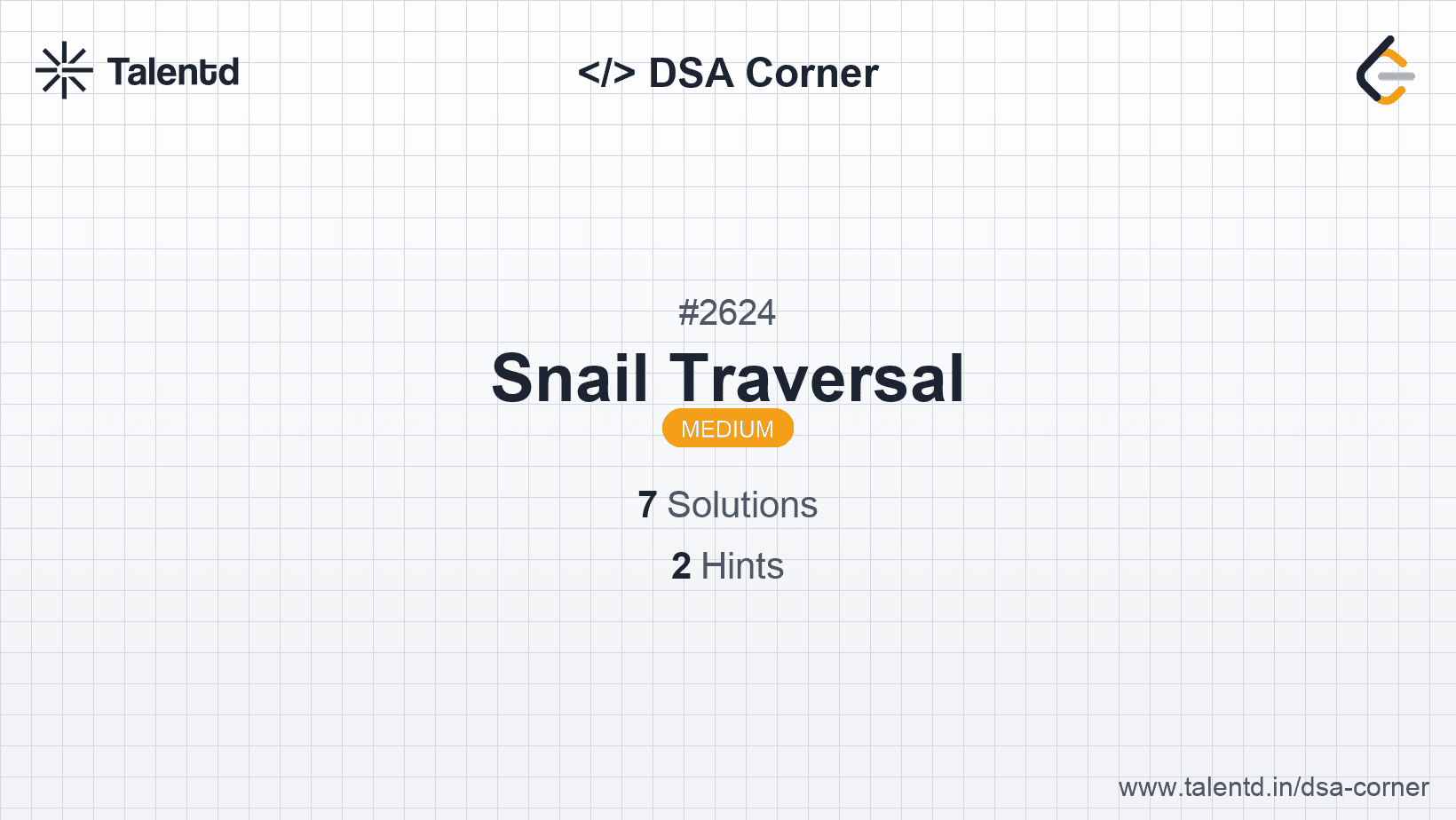
Sponsored
Sponsored
This approach involves directly filling a 2D array using the input array nums by iterating over the columns in tandem with rows, alternating between top-down and bottom-up directions for each new column.
The key idea is to iterate over the given nums array, and fill the current column based on whether its index is even or odd. For even indices we fill from the top row to the bottom row; for odd indices, from the bottom row to the top row.
The algorithm involves:
Time Complexity: O(ROWS * COLS) as each element must be traversed once.
Space Complexity: O(ROWS * COLS) for storing the result matrix.
The Python solution checks the validity of the nums array length against the product of rowsCount and colsCount. It constructs and fills the result matrix by iterating through columns and alternating direction for each subsequent column.
This second approach draws on precomputing indices for traversing the nums array according to snail traversal rules using a two-pointer technique. Here, two pointers always mark top and bottom traversals of a given column.
In this strategy:
Time Complexity: O(ROWS * COLS)
Space Complexity: O(ROWS * COLS) due to resulting vector matrix.
1public class SnailTraversal {
2 public int[][] Snail(int[] nums, int rowsCount, int colsCount) {
3 if (rowsCount * colsCount != nums.Length) {
4 return new int[0][];
5 }
6 int[][] result = new int[rowsCount][];
7 for (int r = 0; r < rowsCount; ++r) {
8 result[r] = new int[colsCount];
9 }
10 int index = 0;
11 for (int c = 0; c < colsCount; ++c) {
12 int t = 0, b = rowsCount - 1;
13 while (t <= b) {
14 if (c % 2 == 0) {
15 result[t++][c] = nums[index++];
16 } else {
17 result[b--][c] = nums[index++];
18 }
19 }
20 }
21 return result;
22 }
23}
24Analogous to the C# solution in the first approach, this variant utilizes two pointer indexes to elegantly manage alternating assignments inside matrix columns sequentially.